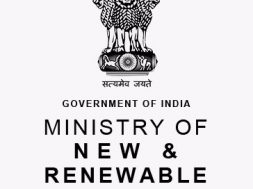
Today’s global energy crisis has brought energy security, affordability, and resilience to the forefront. This crisis has made the energy transition, scaling up renewable energy, energy efficiency and phase down of coal more urgent than ever. The existing global coal fleet is 2080 GW. If this needs to be retired by 2040 then more than 100 GW of coal fleet will need to retire each year. This means roughly 1 coal unit needs to retire every day until 2040. But there is no way the world can phase down on coal if it does not scale-up RE.Scaling up of alternative sources of electricity is important particularly renewables and energy efficiency to provide the same essential services that are the backbone of economies and economic development. This would require more than 300 GW of RE to be built every year, on top of the RE required to meet demand growth and provide energy access to the one Billion still without power.
India, like many countries, is seeking ways to reduce its dependence on fossil fuels and transition towards cleaner and more sustainable energy sources. India has set a target to install 500 GW of non-fossiland reduce the carbon intensity of its GDP by 45% by 2030.Green hydrogen is one such alternative that has been gaining traction in recent years due to its potential to reduce carbon emissions and provide energy security. The cost of green hydrogen generation remains a significant barrier to its widespread adoption in India. With the current cost of electrolyser and renewable energy, the cost of generating Green Hydrogen in India is around Rs 440 – 480 per Kg, compared to around Rs 200 – 240 per Kg for Grey Hydrogen. For commercial viability, Green Hydrogen cost should reduce to around Rs 85 – Rs 160 per Kg over years. This article discusses various strategies that can be implemented to reduce the cost of green hydrogen generation in India.
Increase the Scale of Production
One of the key strategies for reducing the cost of generating green hydrogen is to increase the scale of production. As the production capacity increases, the cost per unit of hydrogen production decreases due to economies of scale. Therefore, it is essential to promote the development of large-scale green hydrogen production facilities in India.
The Indian government has already taken steps in this direction by setting a target of having 50% of installed generation capacity from RE by 2030. Additionally, Government target to develop atleast 5 MTPA Green Hydrogen generation capacity by 2030. To achieve this target, the government has launched several initiatives such as the Green Hydrogen Mission, which aims to promote the production and use of green hydrogen in the country.
Improve the Efficiency of Electrolysis is the process used to split water into hydrogen and oxygen. The efficiency of this process has a significant impact on the cost of green hydrogen generation. Specific Electricity consumption of electrolyser will directly impact the cost of Green Hydrogen. Additionally, electrolyser’s life, efficiency with variable loading, degradation etc. are some other key performance parameters impacting cost of generating Green hydrogen. Currently, specific electricity consumption of electrolysers is around 50 – 55 kWh per Kg of Green Hydrogen. With advancement of technology, few electrolysers have achieved much lower specific electricity consumption. Therefore, it is crucial to improve the efficiency of electrolysis to reduce the cost of green hydrogen.
Reduce the Cost of Renewable Energy
The cost of renewable energy is a critical factor that affects the cost of green hydrogen generation. In India, the cost of renewable energy has been decreasing in recent years due to the government’s efforts to promote the development of renewable energy sources. For example, LCOE for solar in India is as low as Rs 2.5 per kWh, which is among the cheapest in the world. Since Green Hydrogen production require round the clock (RTC) power, the RE supply need to be augmented either using storage solutions such as batteries or banking. Reductions in the cost of RTC renewable energy are required to make green hydrogen generation more cost-effective.
One of the ways to reduce the cost of renewable energy is to promote the development of renewable energy infrastructure specifically for Green Hydrogen. This can be done by removing GST and custom duties on the RE and storage plants’ components which are used exclusively for the Green Hydrogen production. Secondly, developers should be allowed to store RE generated during the day in the electricity grid and withdraw it when there is no generation, via banking mechanism. Developers should be provided with uninterrupted and annual banking of RE power at zero cost, will have substantial impact on Green Hydrogen’s cost of generation. Another way to reduce cost of RTC RE is by enabling alternate revenue source such as carbon financing. Recently Ministry of Power has allowed only RE with storage for generating carbon credits to be sold internationally. However, standalone RE plants with banking facility supplying exclusively for Green Hydrogen production should also be considered for carbon credits, to reduce overall cost of RE for Green Hydrogen.
Develop Better Storage and Transportation Systems
Green hydrogen or its derivatives such as Green Ammonia or Green Methanol are typically stored and transported as a compressed gas or liquid form, which can be very expensive. Therefore, it is essential to develop better storage and transportation systems that can reduce the cost of green hydrogen generation.
One of the ways to reduce the cost of storage is to develop common storage and pipeline infrastructure by the Government at the key port areas, instead of each Green Hydrogen developer developing their own infrastructure. With high utilization rate of common infrastructure, the overall cost of Green Hydrogen is expected to reducesubstantially.
Conclusion
Coupled with The Government of India’s ambitious vision to achieve 50% cumulative electric power installed capacity from non-fossil fuel-based energy resources by 2030, India has inherent advantages of being bestowed with very good solar irradiation, leading to anticipated low-cost renewable production. Fueled by a healthy domestic demand and a robust port infrastructure to facilitate export, India can soon emerge as apotential destination for producing green hydrogen for the globalmarkets. Significant traction is already visible from the private sector interms of forging alliances with global technology companies forelectrolyser manufacturing.
This article is jointly authored by Mr. Navdeep Gupta & Mr. Sunil Dayal.

Navdeep Gupta is an expert in India’s Energy sector with over 17 years’ experience of working in consulting and Renewable Energy industry. As a Management Consultant with Accenture and ICF International, he has consulted marquee clients included The World Bank, large investment banks, global foundations, European utilities, RE developers, Government of India etc. Currently he is working General Manager with ReNew, helping development of Green Hydrogen and Carbon Markets ecosystem through conducive policies.

Sunil Dayal is an energy & power sectoral expert with over 17 years of experience and has worked with large IPPs, global PE funds, Multilateral Agencies and Government on RE & Power related areas.Dayal is an alumnus of IIT Delhi and the Said Business School, University of Oxford. Sunil is currently engaged as an Energy Specialist at the Infrastructure Finance Secretariat of the Government of India under the World Bank’s Technical Assistance Program.
Disclaimer : The views expressed are authors’ own and don’t reflect the views of their employer.














